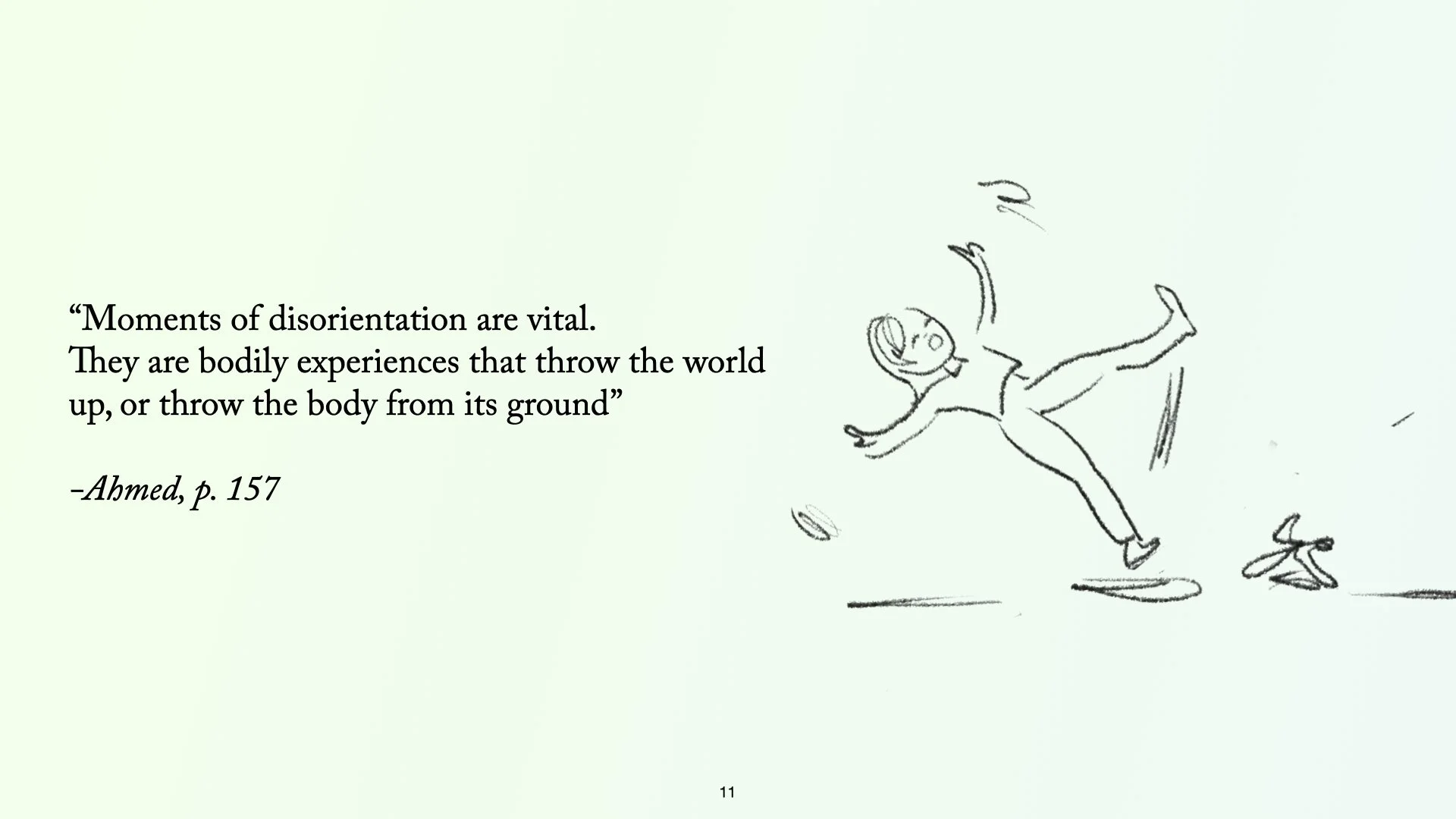Thrown From Normative Ground: Disorientation as a Critical Methodological Strategy
In this theoretical paper, I draw together strong examples from HCI research that showcase the use of disorientation as a critical methodological strategy for HCI research. Disorientation is just as it sounds, a strange or unsettling experience, but following the thinking of queer, feminist scholar Sara Ahmed, I ask how disorientation can offer ways of noticing the ‘straight’ or normative orientations we are embedded within to find openings and alternatives. This paper explores methodological strategies for achieving such reflections, asking: can we grasp moments of disorientation to discover the narratives we are entrenched in that guide the design of technologies? In other words, how can disorientation be used actively as a tool for noticing and eventually, change of how technologies shape our lifeworlds?
I have always imagined disorientation as that moment of being suspended in mid-air, looking at the sky, not quite hitting the ground, where perspective is radically altered temporarily.
In this work I explore three strong cases of disorientation which were used to critique and examine the orientations of technology: pregnancy, queerness and queer relationships, and bird watching.
Publication:
Biggs, Heidi, and Shaowen Bardzell. "Thrown from Normative Ground: Exploring the Potential of Disorientation as a Critical Methodological Strategy in HCI." Proceedings of the 2024 CHI Conference on Human Factors in Computing Systems. 2024.
Abstract:
We introduce the concept of disorientation as an emerging critical methodological strategy for design research in HCI. Disorientation is a phenomenological concept developed by queer feminist theorist Sarah Ahmed that acknowledges the spatio-embodied ‘orientations’ of societal and cultural norms and the queering potential of ‘disorientations’. We use humanistic close reading to analyze three examples from queer, feminist, and more-than-human work in HCI. Our interpretation focuses on how HCI researchers utilize disorientation as a methodological strategy for questioning norms of technologies as well as generatively, toward alternatives. We discuss the tenets of disorientation and several tactics we saw emerge in practice for other practitioners to build upon. Finally, we reflect on implications for the field, as disorientation requires vulnerability and willingness to undergo change, acknowledges embodied knowledge that emerges before interpretation, and suggests the possibility of generative and alternative orientations stemming from those epistemological commitments.

